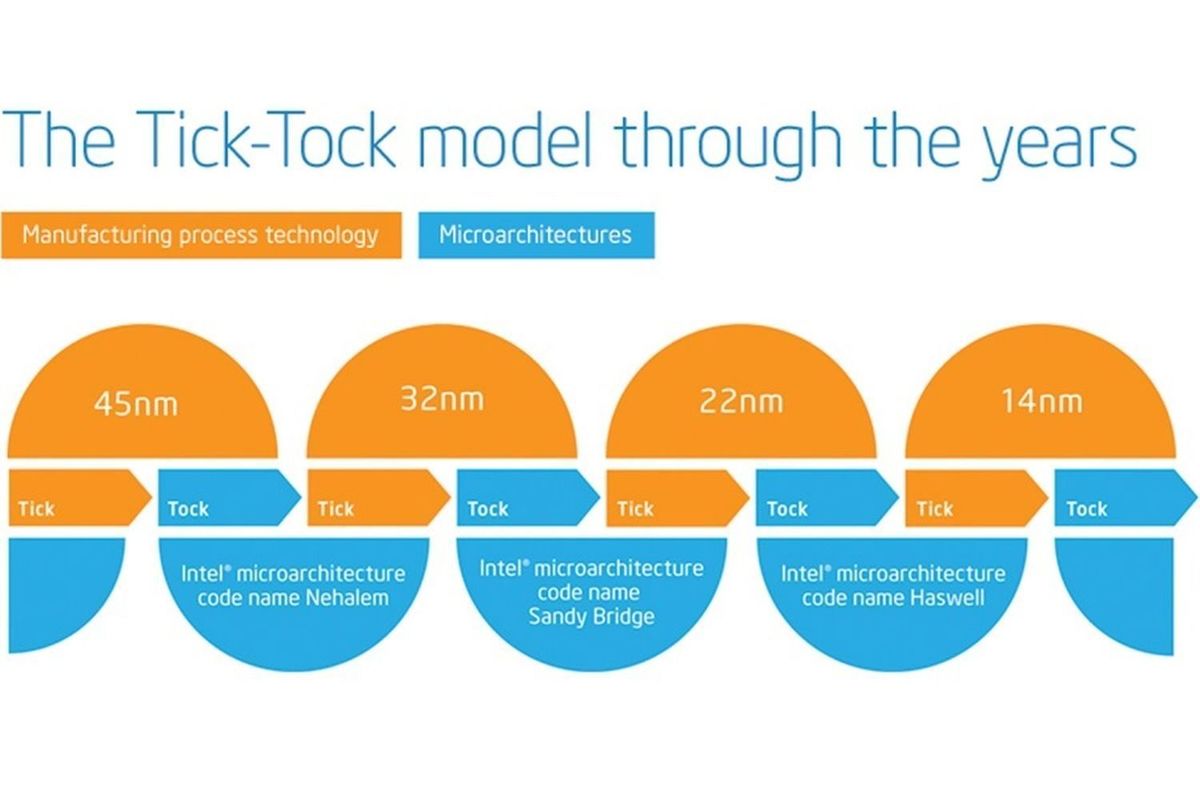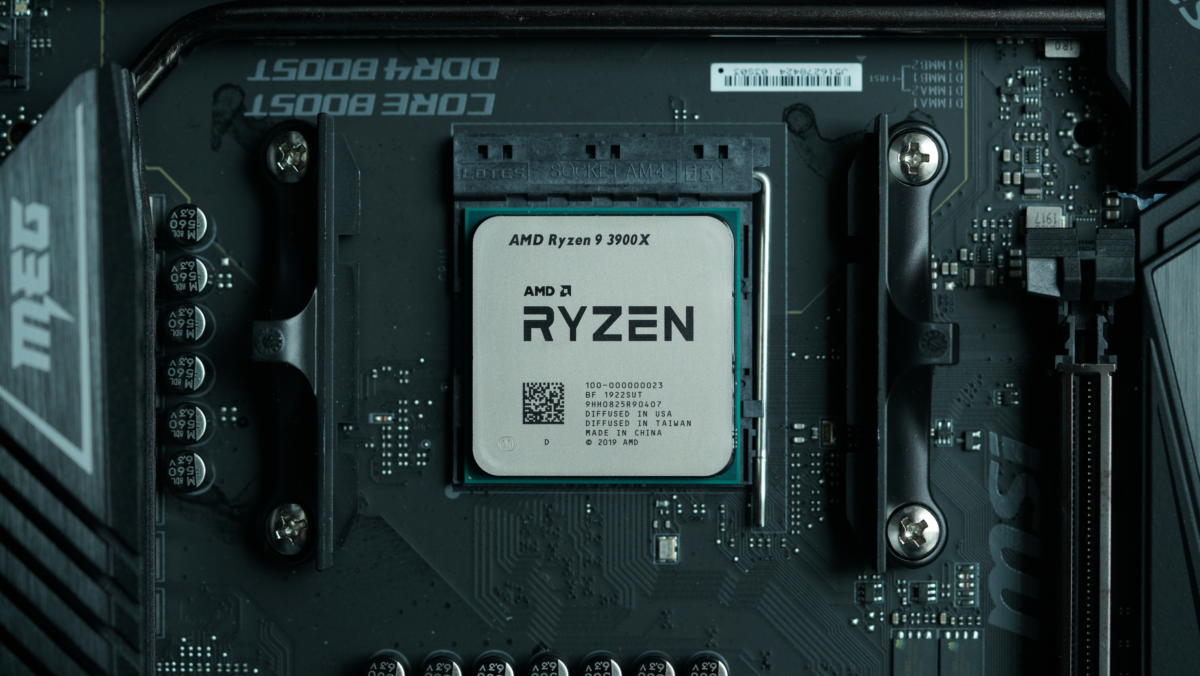
[ad_1]
Intel’s endless 10nm nightmare has cost it so, so much.
It all started on September 5, 2014. That’s the day Intel introduced 5th-gen Core M chips based on “Broadwell,” the company’s first processors built using the 14-nanometer manufacturing process. Despite some manufacturing woes that pushed Broadwell back from its expected 2013 release, Intel’s offering served as the vanguard of processor technology. AMD remained stuck on the 28nm process with its abysmal Bulldozer architecture. A mere month later, the Apple iPad Air 2 launched with a custom A8X chip that couldn’t quite hang with Intel’s older Haswell CPUs in Geekbench—but it was getting close.
Nearly six years later, the tables have turned. Intel’s 10th-gen Core processors remain on an (upgraded) 14nm process. AMD’s Ryzen chips have snatched the computing crown, and Apple’s doing the unthinkable: switching Macs away from x86 CPUs onto its own custom Arm silicon. And if Apple’s flight from Nvidia GPUs after “Bumpgate” in 2009 is any indication, it won’t be coming back.
How did Intel get here? Let’s look at how the company lost its way, starting with the death of tick-tock.
The long road to 10nm
It wasn’t supposed to be like this. Intel’s original roadmaps expected 10nm chips to launch in 2016, with more advanced 7nm chips coming in 2018. Then the delays began.
The death of Intel’s vaunted “tick-tock” manufacturing process served as the canary in the coal mine. For years, Intel’s processors followed the tick-tock cadence, releasing upgraded CPUs with a smaller manufacturing process one generation, then a new microarchitecture built on the smaller process the following year. Tick-tock; tick-tock. The relentless innovation must have sounded like the doomsday clock to then-floundering AMD.
 Intel
IntelThe troublesome 10nm process killed it. In early 2016, Intel confirmed that tick-tock was dead, adding a third leg to the process dubbed “optimization.” Intel’s 7th-gen “Kaby Lake” processors were flagged as the first “optimization” architecture in 2017, another 14nm chip following the releases of Broadwell and then Skylake. Considering that Intel still has yet to release 10nm desktop processors, it comes at no surprise that neither tick-tock nor tick-tock-optimization has been mentioned since.
Tick-tock’s demise obviously delayed 10nm’s arrival. Originally slated for a 2016 launch, by early that year Intel said that its first 10nm would be “Cannon Lake” in the second half of 2017, a die-shrink of the optimized Kaby Lake architecture. It wouldn’t launch until mid-2018, and only then in a handful of low-end systems with integrated graphics disabled. Later that year, we said “Cannon Lake is barely squeaked out in any reasonable volume.” The release went so poorly that when Intel previewed 10nm “Sunny Cove” cores to the press in December 2018, it also vowed to decouple its architecture and IP from manufacturing process as much as possible to prevent stalls like this from happening again.
The 10nm question occurs at 17:30 in the video above.
Intel CEO Bob Swan blamed the delays on sheer ambition at Fortune’s Brainstorm Tech Conference in mid-2019, citing the company’s history of “defying odds.” “At a time when it was getting harder and harder, we set a more and more aggressive goal. From that, it just took us longer… We prioritized performance at a time when predictability was really important,” he said. “The short story is we learned from it and we’ll get our 10nm node out this year. Our 7nm node will be out in two years and it will be a 2.0x scaling, so back to the historical Moore’s Law curve.”
Those 10nm Sunny Cove cores indeed hit laptops in the form of 10th-gen “Ice Lake” processors in August, 2019. Yes, 10nm was finally, truly here—at least in notebooks. Intel’s desktop offerings remain on the 14nm process. And even after the three-year delay, the actual 10nm CPU cores came with lower clock speeds and didn’t impress much.
Our performance analysis declared that Ice Lake’s true appeal lay in its vastly upgraded graphics chops. “Our general takeaway is that the CPU is on a par with, or somewhat faster than, today’s laptops in most conventional applications that don’t touch the special sauce of improved encryption, AI or encoding features,” we said. “In applications that touch those features, though, it’s a major upgrade over existing 14nm chips.” It’s telling, however, that Intel’s “10th-gen” Comet Lake H gaming processors continue to use the 14nm process and its higher clock speeds.
 Gordon Mah Ung
Gordon Mah UngIntel desktop CPUs still game like champs.
Intel hasn’t sat still for half a decade; it’s been fine-tuning the performance of its 14nm processors, introducing features like AVX-512 instructions, Thunderbolt 3, Wi-Fi 6, and greatly enhanced integrated graphics.
Intel’s also been pushing what’s possible with 14nm hard to keep up with the competitive landscape. While the 14nm Core i7-6700K debuted with four cores and 4.2 GHz Turbo speeds, the new 10-core, 20-thread Core i9-10900K can hit up to 5.3GHz under optimal conditions. That might be why we haven’t seen 10nm processors hit desktops yet. Intel’s tuned the 14nm architectures so finely that it’s hard to imagine newer 10nm coming anywhere close to the same raw speeds.
AMD rising
Intel’s 10nm struggles have opened the doors for its rivals.
 Gordon Mah Ung/IDG
Gordon Mah Ung/IDGAMD’s new 12-core Ryzen 9 3900X is the new king of mainstream performance CPUs.
After the disastrous Bulldozer, AMD struck back big-time with its new Ryzen processors, built using TSMC’s most advanced processing nodes. Ryzen debuted in 2017 as a core-loaded 14nm monster that slaughtered Intel in multi-threaded tasks and overall value, but lagged in gaming performance. Lower prices and significant IPC improvements helped 2nd-gen Ryzen supplant Intel’s 8th-gen Core i7 as our recommended flagship processor. Then, with Intel mired at 14nm, AMD took the technological lead with 3rd-gen Ryzen CPUs built using an advanced 7nm process with support for blazing-fast PCIe 4.0 storage. (Intel’s latest 10th-gen chips remain on PCIe 3.0.)
“For probably 9 out of 10 consumers looking at a high-end CPU, they’ll want to buy the Ryzen 9 3900X [over the Core i9-9900K],” we declared in our review. Then AMD released the faster 16-core Ryzen 9 3950X just to rub the victory in Intel’s face. Check out our recap on how AMD’s Ryzen snatched the computing crown from Intel after 15 long years if you want to learn more.
 Brad Chacos/IDG
Brad Chacos/IDGScreenshot of Amazon’s best-selling desktop CPUs on June 23, 2020.
Ryzen processors dominate our list of the best CPUs, and AMD’s taking full advantage. The company’s gained market share for 10 straight quarters, hitting nearly 20 percent of total desktop pie for the first time since 2013. Ryzen desktop CPUs accounted for 86 percent of sales at Germany’s enthusiast-focused Mindfactory this past February, and they’ve remained atop Amazon’s CPU bestseller list for years now. “In desktop, overall demand for our latest Ryzen 3000 and prior generation Ryzen 2000 processor families were strong, both of which continue to top retailer bestseller lists and have more than 50-percent share of premium processor sales at many top global etailers,” CEO Lisa Su said to investors in April.
 Asus
AsusThe Asus ROG Zephyrus G14 was the first laptop out of the gate with AMD’s Ryzen 9 4900HS mobile CPU, revealed March 30, 2020.
Making matters worse for Intel, 7nm Ryzen 4000 mobile chips introduced in 2020 enable performance that all but the highest-end Intel-based systems just can’t match. “To put AMD’s Ryzen 4000 in perspective, you have to understand that in AMD’s 50-year history, it has never beaten Intel in laptops,” we said in our review. “…AMD’s Ryzen 4000 can spar with laptops that weigh two to even three times as much. This is something we frankly didn’t expect. Ryzen 4000 is without a doubt the most game-changing performance laptop CPU we’ve seen in years.”
Laptops remained a key bastion for Intel, but AMD’s knocking. Notebooks like the Asus ROG Zephyrus G14, Acer Swift 3, and the Dell G5 15 SE deliver killer performance at killer prices. AMD expects over 100 laptops with Ryzen 4000 to launch in 2020. It also expects to release next-gen Ryzen desktop processors later this year, further driving home its technological advantage.
Keep reading to learn how Apple just dealt Intel another crushing blow.
[ad_2]
Source link